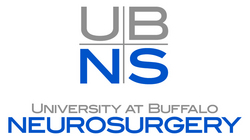SBIR Phase I: A Blood-Based Test to Identify Patients with Intracranial Aneurysm
January 1, 2018/ Original Source
Abstract
This SBIR Phase I project aims to develop a novel blood diagnostic to detect unruptured intracranial aneurysms (IA) in asymptomatic patients. About 2-5% of the U.S. population (about 6-17 million Americans) have an unruptured IA, and these individuals are largely asymptomatic and thus unaware of the potential danger they are in. Currently, no good screening tools to identify patients with unruptured IAs exist. As a result, about 30,000 Americans suffer IA rupture each year without warning, 10-15% of whom die on the way to the hospital and another 30-40% of whom die within a month. The diagnostic screening technology developed in this project will identify people who have unruptured IAs, thus enabling patients to be monitored and receive preventative treatment, which can drastically reduce the rate of rupture. In addition to the health benefits of this non-invasive test, it will also result in massive savings for the healthcare system. The estimated lifetime healthcare costs for annual cases of patients with ruptured IA is about $3 billion, and more than $885 million for patients with unruptured IAs. Plus, the annual lost wages of surviving ruptured IA patients and their caretakers combined is an estimated $138 million.
This project aims to develop a molecular diagnostic to detect biomarkers of unruptured aneurysms using the transcriptomes of circulating neutrophils. Preliminary results have shown that circulating neutrophils isolated from blood samples could be used to predict unruptured IA presence with 80% accuracy. This Phase I project will increase the sample size of the previous discovery and validation cohorts to give more confidence in the discovered biomarkers as well as increase the accuracy of the proposed diagnostic. Transcriptomes of neutrophil RNA from patients with and without aneurysms will be obtained through next-generation sequencing. The transcriptome data will be used to further develop biomarker models by employing a machine learning pipeline that uses supervised learning combined with 10-fold cross-validation to prevent over-fitting. The created biomarker models will be validated using neutrophil RNA expression from an independent cohort of patients. Predictive accuracy of 90% with an AUC greater than 0.80 will be used to measure success. Furthermore, to established feasibility of assessing the biomarkers via an inexpensive test, differential expression of biomarker genes will be tested using RT-qPCR, a cheaper, more facile technique than RNA sequencing.
Read more by clicking here: Original Source






